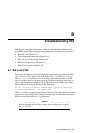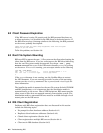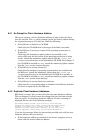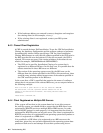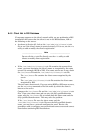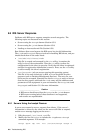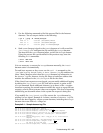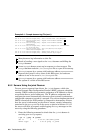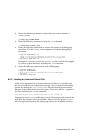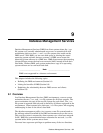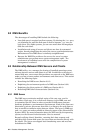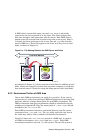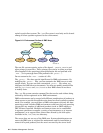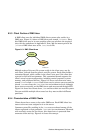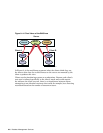2. Enter the following command to determine the current setting of
JOIND_FLAGS:
# rcmgr get JOIND.FLAGS
3. Enter the following command to stop the joind daemon:
# /sbin/init.d/dhcp stop
4. Enter the following commands to restart the daemon with debugging
turned on. Use the JOIND_FLAGS argument to indicate debugging is
turned on.
# rcmgr set JOIND_FLAGS y -dx
Where x is the level of debugging. A value from 0 to 9 is valid.
Where y is the previously determined setting of the JOIND_FLAGS.
# /sbin/init.d dhcp start -dx
Example 8–1 shows a section of a daemon.log file with the data logged
by various system daemons, including the joind daemon.
5. Enter the following commands to turn off debugging:
# /sbin/init.d/dhcp stop
# rcmgr set JOIND_FLAGS y
Where y is the previous determined setting of the JOIND_FLAGS.
@ determined.
# /sbin/init.d dhcp start
8.5.3 Loading an Incorrect Kernel File
If the server responds but an incorrect kernel is loaded, it is possible that
the server’s RIS area is configured incorrectly. You can observe the loading
process by editing the /etc/inetd.conf file and restarting the Internet
daemon as described in the previous section. To do this, add the
−d option to
the line containing the tftpd command:
tftp dgram udp wait root /usr/sbin/tftpd tftpd -d /tmp /var/adm/ris
Logging the server’s tftp traffic shows you the file being transferred and the
time that the transfer starts and finishes. Ensure that the proper vmunix
file is being loaded and that the loading operations are completed correctly.
Troubleshooting RIS 8–9



